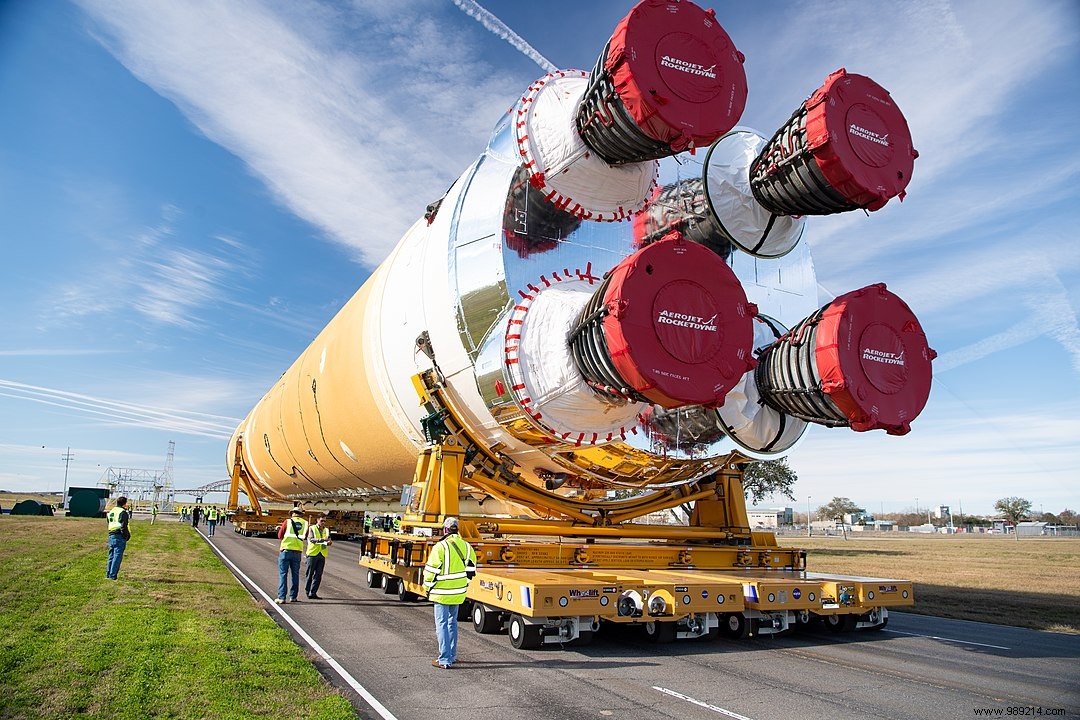As everyone knows, NASA plans to set foot on the Moon as early as 2024 as part of its Artemis program. However, some experts consider this deadline too ambitious. New President-elect Joe Biden may soon loosen that timeline, and give the U.S. agency an extra year or two to achieve that goal.
In 2017, the Trump administration asked NASA to return humans to the Moon in 2024. From this desire was born the Artemis program, the first part of which will take place in three steps. The first, Artemis 1, will be an unmanned mission around the Moon. Next will come the Artemis 2 and Artemis 3 missions. The first will be a manned mission in orbit around the Moon, while the second will take the next man and the first woman to land on the lunar surface.
Note that eventually the goal of the Artemis program will be to establish permanent installations in the South Pole region allowing crews to make long-term stays in space. It will also be about developing and testing new approaches, technologies and systems allowing simpler and cheaper exploration of deep space (Mars exploration in sight).
That being said, we knew from the start that this 2024 goal was very ambitious. Many then justified this deadline by the idea that if successful, this return to the Moon could be operated under the presidency of Donald Trump, in the event of re-election. Since then, the American situation has evolved. From next January, the United States will indeed be led by the new President-elect Joe Biden.

A priori, there is no question of canceling the Artemis program. The president-elect has not, to date, spoken much publicly about NASA or space exploration. However, we do know that the Democratic Party explicitly endorses Artemis' broad vision:" We support NASA's work to get Americans back to the Moon and beyond, taking the next step in exploring our solar system ” , can we read in particular on the Party's 2020 platform.
In contrast, some experts believe the Biden administration could give NASA "a little more slack" to achieve its goals.
“I expect the 2024 target to disappear ” , space policy expert John Logsdon, professor emeritus of political science and international affairs at the Elliott School of International Affairs at George Washington University, told Space.com. Eric Stallmer, executive vice president of government affairs and public policy at Voyager Space Holdings, agrees. “I think people will reassess the schedule for sure. And, frankly, I don't think anyone thought the 2024 timeline was ever realistic .
These aren't the only "skeptics". Asked last June how well the Artemis schedule is performing, the new head of NASA's human spaceflight programs, Kathy Lueders, also agreed that this goal would still be difficult to achieve. " I don't have a crystal ball " , she said. “ But we will try. (…) I think it is very important to have an aggressive goal. This allows the team to focus on the importance of the mission ” .

The changes to the Artemis calendar, if made, will not be the only ones applied to the field of planetary science by the new President-elect. On its platform, the Democratic Party also expresses a strong commitment to the fight against climate change .
As a reminder, during his campaign for the presidency, the future tenant of the White House had notably promised to rejoin the Paris Agreement, which Donald Trump had decided to leave. The United States, the second largest emitter of greenhouse gases, could then take on a leading role in climate action, despite the delay.
We should therefore expect an increase in Earth observation missions from NASA and the National Oceanic and Atmospheric Administration to better understand global warming and its impact on our planet.